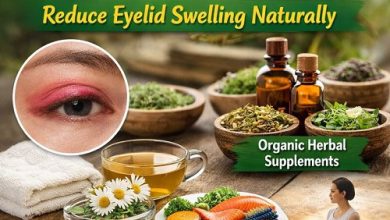Is Giloy Really Safe? Shocking Warnings from Liver Experts

Giloy (Tinospora cordifolia), also called guduchi in Ayurvedic medicine, surged in popularity during and after the COVID-19 pandemic as a widely promoted “natural” immune booster. For centuries it has been used in traditional systems for fever, digestion, and general tonic effects — and many modern supplements still market it that way. But over the last few years a growing number of hepatologists (liver specialists) and case series have raised alarms: can giloy actually injure the liver — and in some people trigger a severe, autoimmune-like hepatitis? This article examines the evidence, explains how and why giloy might cause harm, summarizes expert debate, and gives practical advice for patients and clinicians.
What researchers and clinicians are seeing: case series and reports
Starting around 2021–2022, multiple peer-reviewed case reports and multicenter case series described patients who developed acute liver injury after using giloy preparations. In one influential multicenter Indian study investigators reported dozens of patients who developed acute hepatitis with autoimmune features after taking giloy preparations; many presented weeks after beginning the herb and some required hospitalization, steroid therapy, or even liver transplant evaluation. The authors concluded that giloy use was associated with an autoimmune-like liver injury and could “unmask” latent autoimmune liver disease in susceptible people.
Independent case reports from other countries have since followed: documented instances where liver enzymes rose dramatically after starting Tinospora cordifolia, with improvement on stopping the herb and in some cases immunosuppressive treatment was required. These temporally linked patterns — herb started, symptoms weeks later, improvement after discontinuation — are a hallmark of herb-induced liver injury (HILI).
Bottom line: there is credible clinical evidence — multiple case reports and a multicenter case series — linking giloy consumption to acute liver injury in at least a subset of patients.
How might giloy damage the liver? (proposed mechanisms)
The exact biological mechanism is not settled, but two prevailing hypotheses dominate the literature:
- Immune-mediated (autoimmune-like) reaction. Several case series report liver biopsies and clinical features resembling autoimmune hepatitis (AIH): elevated autoantibodies, inflammatory infiltrates on biopsy, and steroid responsiveness. Investigators propose that giloy’s immune-stimulating phytochemicals may trigger an inappropriate immune attack on hepatocytes in predisposed individuals. In other words, a plant that “boosts” immunity might over-activate immune responses in susceptible livers.
- Contamination / misidentification / adulteration. Some critics point out that herbal products, especially during a pandemic surge in demand, can be adulterated, mislabeled, or contaminated with other plant species or pharmaceuticals — any of which could cause liver injury. Authenticity and preparation method (raw stem, concentrated extract, powders, combined formulas) matter a lot and complicate causality. Several letters and reviews argue that observed toxicity may partly reflect product quality rather than an intrinsic property of the genuine Tinospora plant.
It’s possible both pathways contribute: an immune-stimulating compound in pure giloy may harm a susceptible individual, while adulteration increases risk in other cases. Current evidence cannot definitively pinpoint one single mechanism for all reported cases.
How common is giloy-related liver injury?
We do not have reliable population-level incidence rates. HILI in general is rare relative to the number of people who consume herbal products, but rare events can still be clinically important. The multicenter series that sparked much of the concern identified dozens of cases seen at tertiary liver centers — noteworthy given that many thousands likely consumed giloy without problems. Critics correctly point out that case series can overestimate causation because they lack control groups and because patients often take multiple drugs or have underlying disease that predisposes to liver injury.
Interpretation: the evidence indicates that giloy can cause liver injury in certain people, but the absolute risk for an average healthy user remains uncertain and is likely low. That uncertainty is exactly why experts urge caution and better quality research.
Who appears to be at higher risk?
Based on reported cases and expert commentaries, the following groups seem to be at higher risk of developing giloy-related liver problems:
- People with pre-existing autoimmune diseases or a personal/family history suggesting autoimmune predisposition. Giloy’s immune-stimulating properties could unmask latent conditions.
- Individuals with pre-existing chronic liver disease (viral hepatitis, alcoholic liver disease, NASH) — any stressed liver has less reserve.
- People on multiple medications (polypharmacy) where interactions or concurrent hepatotoxic drugs could confound effects.
- Those taking concentrated extracts or high-dose supplements rather than traditional decoctions; concentrated preparations may increase risk though dose-response data are limited.
If you belong to one of these groups, experts recommend avoiding giloy unless advised and supervised by a clinician who understands both herbal medicines and liver disease.
The debate: are these reports definitive proof?
No — the topic is contested in the medical literature. Several thoughtful rebuttals and reviews argue that case series attributing liver injury to giloy have methodological limitations: incomplete exclusion of other causes, variable product quality, polyherbal formulations, and potential bias during a time of heightened scrutiny (the COVID pandemic increased both use and reporting). Some reviewers note that pristine, authenticated Tinospora cordifolia has long been used without widespread reports of hepatotoxicity, and call for more rigorous, controlled studies before concluding causation.
At the same time, the pattern of autoimmune-like liver injury and temporal relationships in many reports are clinically plausible and cannot be dismissed outright. Many hepatologists argue that the precautionary principle should apply: when a commonly used herb can cause severe liver injury in some people, clinicians and consumers should act carefully.
Real-world consequences: reports of severe outcomes
While many reported cases resolved after stopping giloy and, when needed, receiving steroids, there are alarming outcomes in the literature: cases of acute liver failure, acute-on-chronic liver failure in patients with underlying disease, and at least one death reported in case discussions. These instances are rare but important because of their severity and because they occurred in people using an over-the-counter “natural” product believed to be benign.
Practical guidance for consumers
If you are considering giloy or already taking it, here’s pragmatic advice based on current evidence and expert recommendations:
- If you have known liver disease, autoimmune disease, or are on multiple medications — do not take giloy without medical supervision. The risk-benefit balance shifts strongly toward avoiding it.
- If you are pregnant, breastfeeding, or immunocompromised — avoid it. Safety data are lacking and theoretical risks exist.
- Use caution with concentrated extracts and long-term use. Traditional uses often involve decoctions or lower-dose preparations; concentrated capsules or extracts may deliver higher active doses and were commonly used in reported cases.
- Watch for warning signs of liver injury: fatigue, nausea, jaundice (yellowing of eyes/skin), dark urine, pale stools, abdominal pain, easy bruising, or unexplained itching. If any occur, stop the herb immediately and see a doctor — ask for liver blood tests (ALT, AST, bilirubin, alkaline phosphatase).
- Tell clinicians about herbal use. Many patients don’t think to report “natural” supplements, but disclosure is crucial to diagnose HILI and avoid dangerous combinations.
Practical guidance for clinicians
For hepatologists, general physicians, and pharmacists:
- Take a thorough herbal and supplement history when evaluating acute hepatitis — ask specifically about guduchi/giloy benefits.
- Consider HILI in the differential for autoimmune-like hepatitis. If histology and serology suggest AIH but the patient recently started giloy, suspect HILI and consider drug withdrawal before committing to lifelong immunosuppression. Many cases improved after stopping the herb, sometimes with steroid tapering.
- Report suspected cases to pharmacovigilance authorities. HILI is under-reported; better reporting will improve our understanding of incidence and risk factors.
Regulation, quality control, and industry responsibilities
One major complicating factor is the global herbal supplements market’s uneven regulation. In many countries, herbal products are sold as dietary supplements with limited oversight of manufacturing, purity, and labeling. That creates real concerns:
- Adulteration (other species or pharmaceuticals added),
- Misidentification (wrong plant used),
- Contamination (heavy metals, microbes),
- Inconsistent potency across batches.
These problems make it harder to attribute harm cleanly to the botanical species alone, and they emphasize the need for better quality control, third-party testing, and clear labeling. Regulators and manufacturers should prioritize good manufacturing practices, batch testing, and transparent ingredient lists. Clinicians should encourage patients to choose products from reputable manufacturers and, when possible, documented batches.
What researchers say is needed next
The literature is clear about gaps: we need prospective studies with authenticated plant material, controlled dosing, and better case definitions to estimate true risk and identify vulnerable subgroups. Molecular studies could also clarify whether specific giloy constituents trigger immune responses and which genetic or environmental factors predispose to liver injury. Until such data exist, clinical prudence is the recommended approach.
conclusion:
For many healthy people who take low-dose, traditional preparations for short periods, giloy may be harmless — and some reports and historical use support that. However, there is now credible, peer-reviewed evidence that giloy (or products sold as giloy) has been associated with acute, sometimes severe, autoimmune-like liver injury in a subset of users. The causal pathway is debated (intrinsic hepatotoxicity vs. adulteration vs. unmasking of latent autoimmunity), but the clinical signal is strong enough that hepatologists and public health experts recommend caution — especially for individuals with autoimmune disease, pre-existing liver disease, or polypharmacy.




